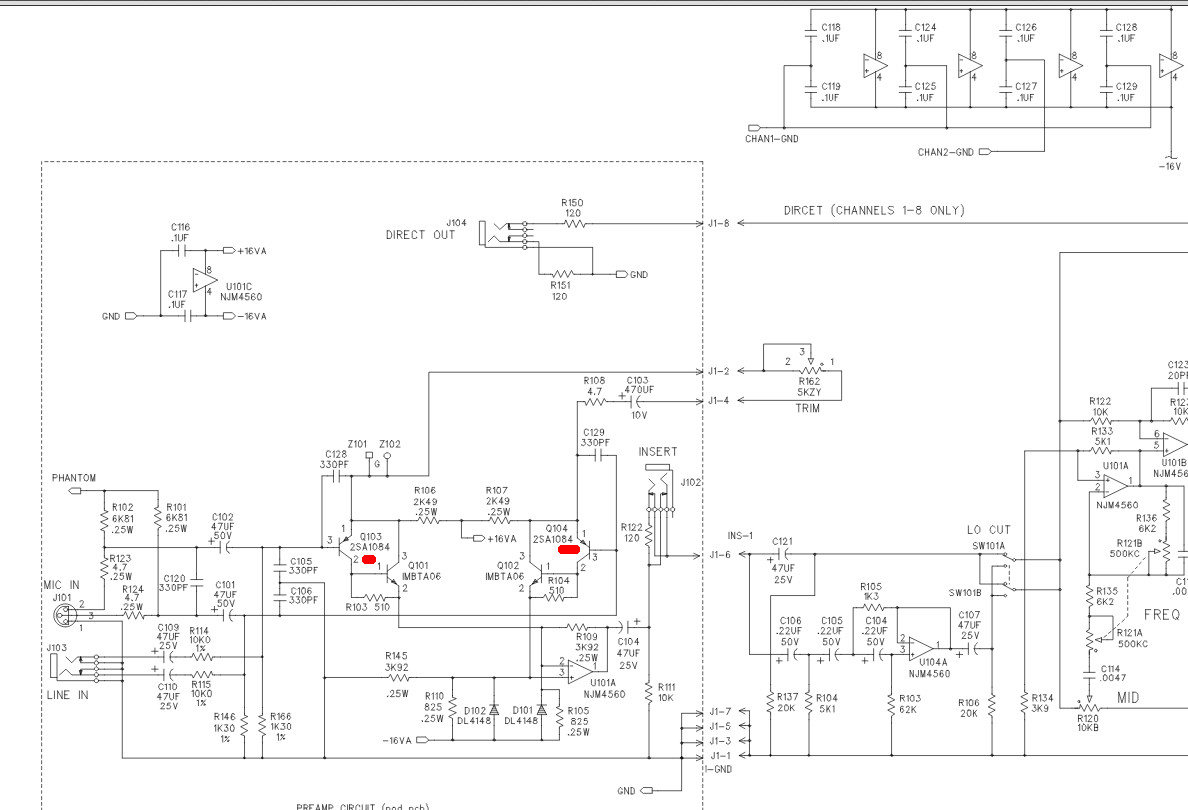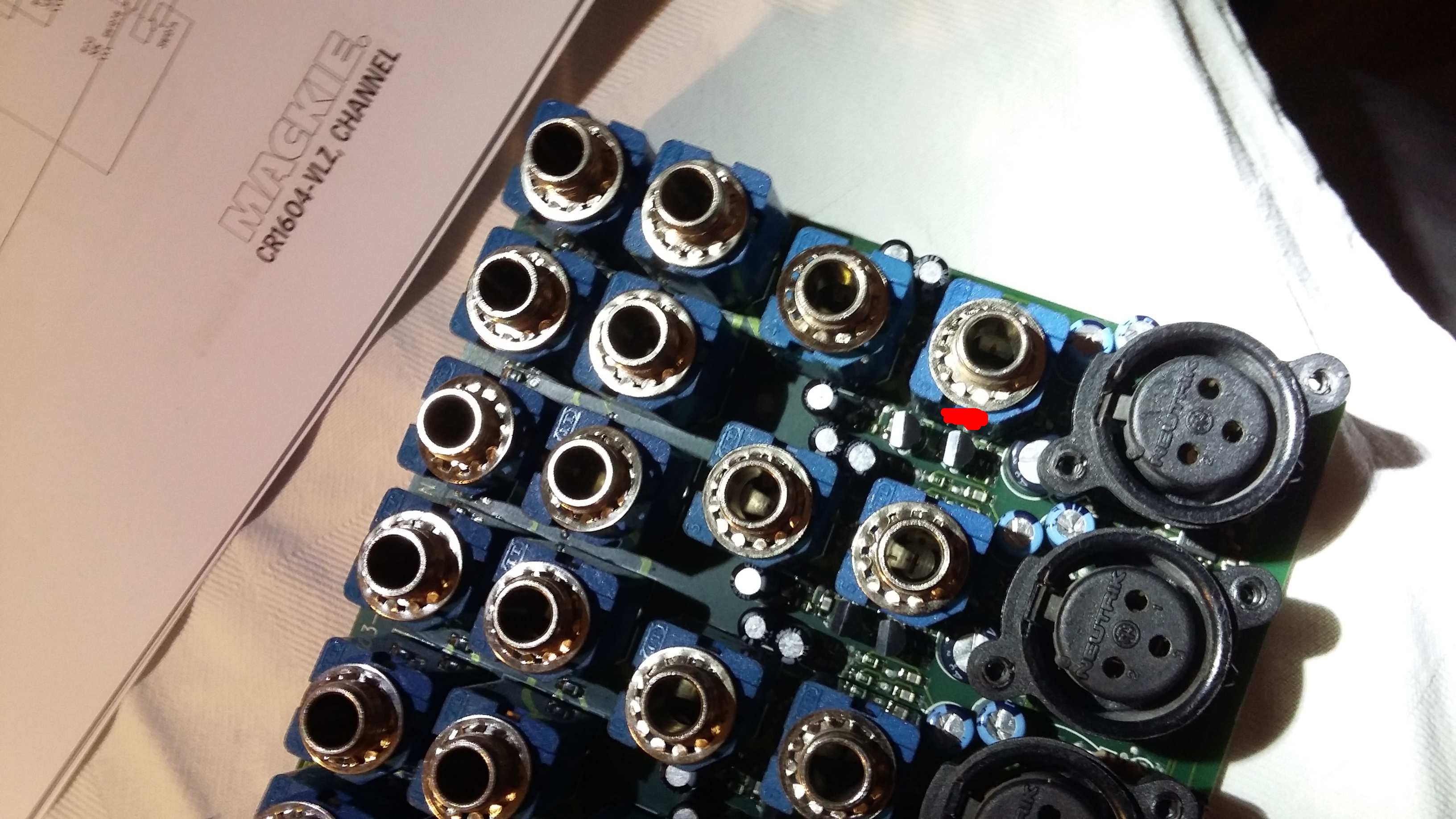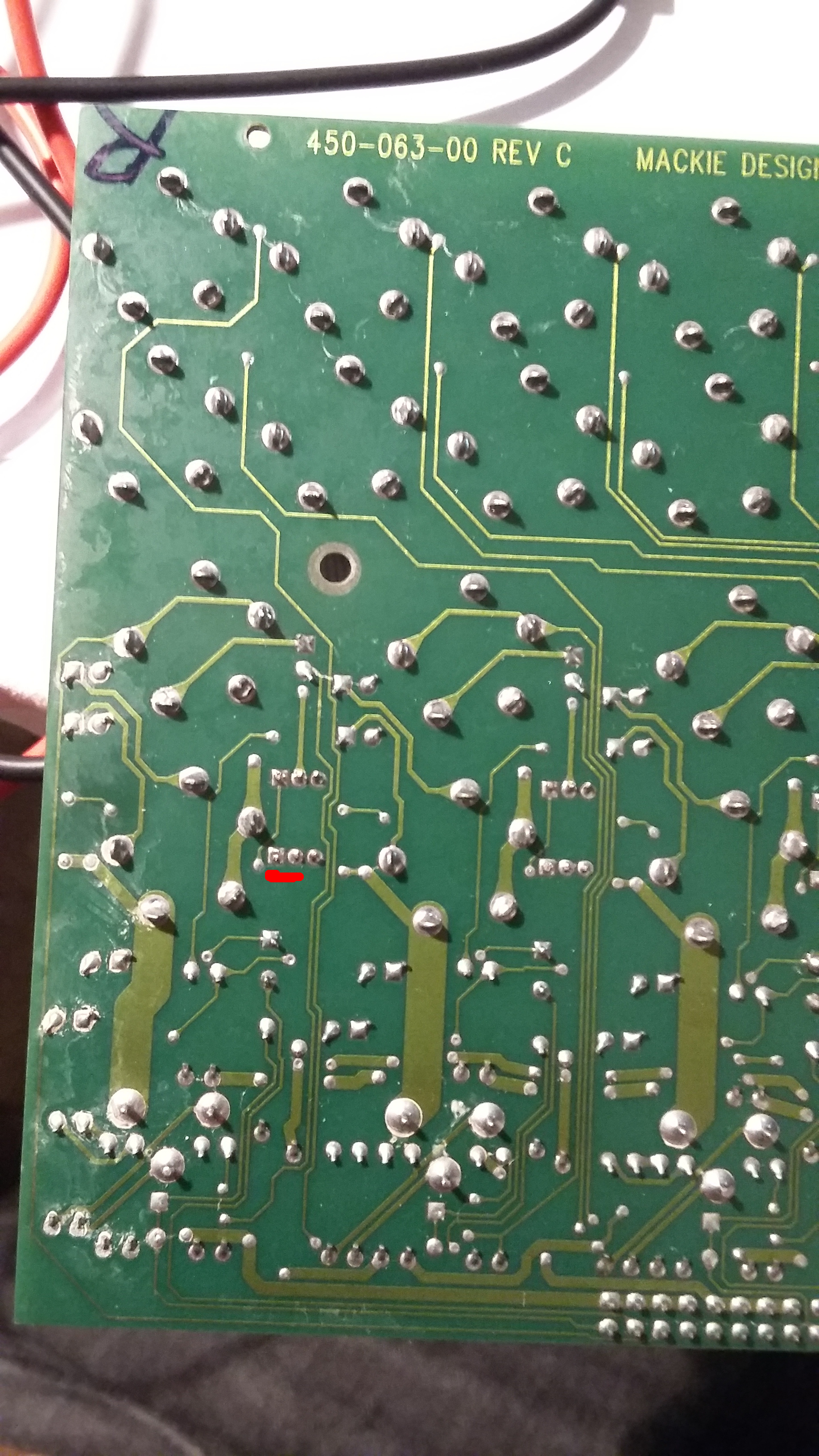ma_headphone
Member
- Joined
- Nov 30, 2017
- Messages
- 15
Hi!
I've been replacing the ribbon cables on my Mackie CR1604VLZ to fix the well known issues related to them. After replacing them I heard generally a big improvement in the sound.
However, I did a mistake during the repair. During the replacement I inverted one of the ribbon cables, and I saw smoke coming out of the power/preamp board. I immediately turned off them mixer and fixed the cable direction.
The result of this is that, when I power up the mixer, the 1st channel does not work anymore. There is also a loud buzz on the master, but all the rest seems ok. If I enter through and insert point on the 1st channel (thus bypassing the preamp) I can hear the sound, and I can also use the EQ. My suspicion is that there is an issue in the preamp/input section.
I checked the PCB and I think I found a fried PNP transistor. I checked the legs and it seems like 2 legs are shorted. I checked the legs on the transistors on other channels and there is 7K Ohm resistance between the legs.
I marked in red the PNP which I'm talking about. I'm not sure which of the 2 it is on the schematics, I guess the left one.
How shall I proceed, shall I just try replacing this transistor? Is there some other check I should do, maybe there is something else broken I should replace before turning on the mixer again?
The PCB has both SMD and through-whole components, I think I should be able to replace this PNP on my own, even though I'm not a soldering guru.
Thanks in advance!



I've been replacing the ribbon cables on my Mackie CR1604VLZ to fix the well known issues related to them. After replacing them I heard generally a big improvement in the sound.
However, I did a mistake during the repair. During the replacement I inverted one of the ribbon cables, and I saw smoke coming out of the power/preamp board. I immediately turned off them mixer and fixed the cable direction.
The result of this is that, when I power up the mixer, the 1st channel does not work anymore. There is also a loud buzz on the master, but all the rest seems ok. If I enter through and insert point on the 1st channel (thus bypassing the preamp) I can hear the sound, and I can also use the EQ. My suspicion is that there is an issue in the preamp/input section.
I checked the PCB and I think I found a fried PNP transistor. I checked the legs and it seems like 2 legs are shorted. I checked the legs on the transistors on other channels and there is 7K Ohm resistance between the legs.
I marked in red the PNP which I'm talking about. I'm not sure which of the 2 it is on the schematics, I guess the left one.
How shall I proceed, shall I just try replacing this transistor? Is there some other check I should do, maybe there is something else broken I should replace before turning on the mixer again?
The PCB has both SMD and through-whole components, I think I should be able to replace this PNP on my own, even though I'm not a soldering guru.
Thanks in advance!

























